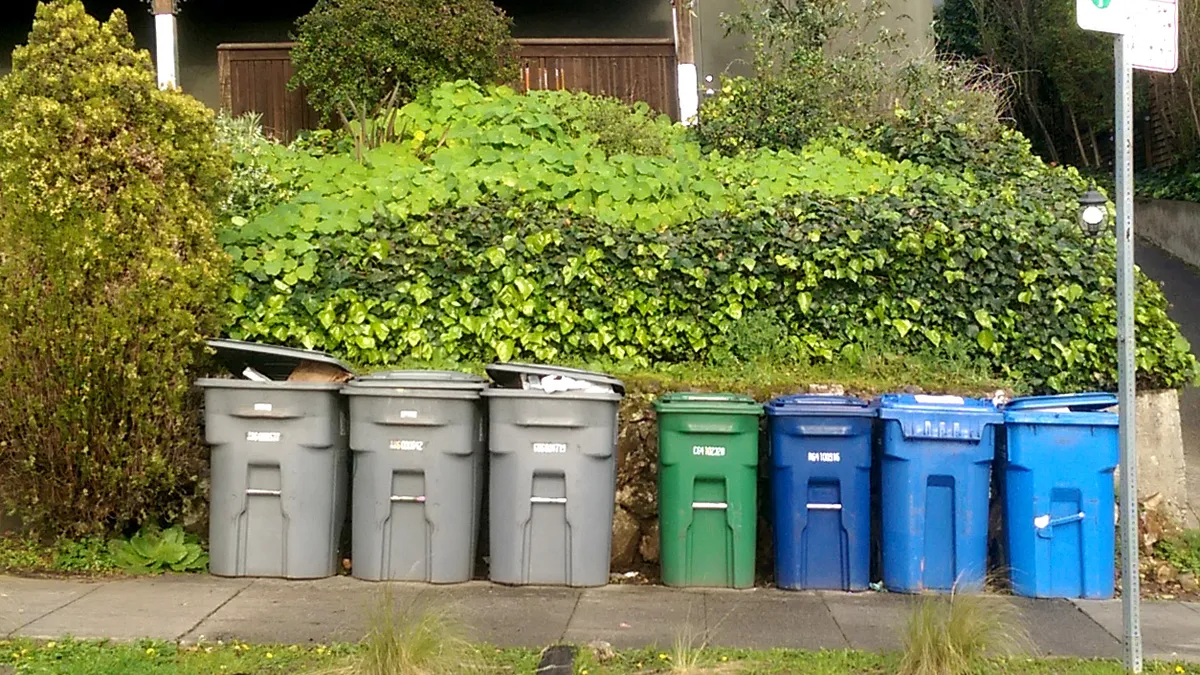Dive Brief:
- The U.S. now has 148 curbside organics collection programs that are accessible to 5.1 million residents in 326 communities, which includes county governments and solid waste districts. This number has nearly doubled since 2014, according to a new nationwide survey conducted by BioCycle and the Institute for Local Self-Reliance (ILSR) from June to November 2017.
- Among the 77 curbside program that provided survey responses, 47 have automatic enrollment, 21 are opt-in and nine are mandatory. When factoring in all 148 programs, the top three states for community access were California, Washington and Minnesota.
- The survey also found 67 drop-off programs across 15 states. No comparison baseline is available because this was the first survey to record drop-offs, but a large share of these programs started within the past three years. Massachusetts, Minnesota and Maine had the most drop-off programs. When measured in terms of household access, New York was the leader.
Dive Insight:
This is the eighth time that BioCycle has conducted a curbside survey since it began in 2005, and the growth in access is significant compared to prior editions. Recent examples of new programs or expansions have been appearing in states across the country this year — in California, Idaho, Texas, Virginia, New York and Maine, to name a few.
The full survey has a wealth of insight, case studies and detailed tables about the many details involved. That includes how many programs accept meat and dairy, which types of compostable products are acceptable, whether programs are operated by governments or private companies, and much more.
The factors behind each program are different, and the survey did not cover whether collection costs or access to regional processing capacity played a role. Both are regular talking points when communities are deciding whether to pursue curbside programs in particular. Beyond that, it often comes down to local demand and infrastructure. As a recent MIT study found, the cities with food scrap collection options vary in size and socioeconomic status. One of the only common characteristics was existing waste reduction goals or pay-as-you-throw programs.
This tracks with the findings from the BioCycle and ILSR survey. Among the programs that responded to questions about their criteria for success, diversion goals and cost-effectiveness were the top reasons. Though in each case the evolution often differed. Some began as farmers market drop-offs and grew from there. Some had existing yard waste collection programs and started allowing residents to add food scraps, which is one reason why 71% of the 148 curbside programs do co-collection. Others had pilots that didn't pan out, or were still too new to know whether they would expand.
It's clear these programs are coming to fruition, especially when considering subscription-based commercial and residential service that isn't organized by local governments. Recent government agency reporting and media coverage indicate these methods are also increasing activity. Access to organics diversion options still has a long way to go until it reaches parity with recycling, but the fact that programs now exist in more than half of U.S. states show how far the practice has come.















